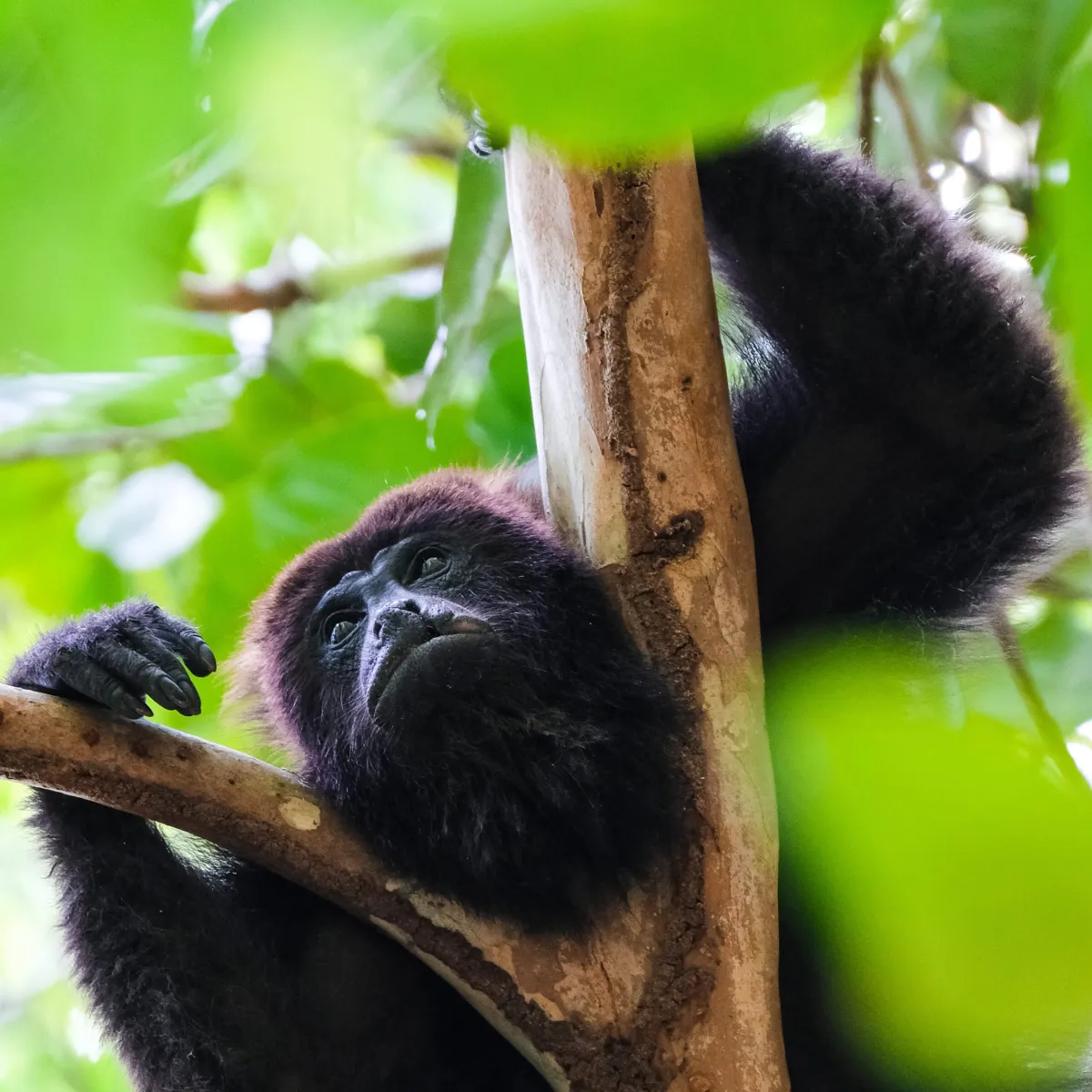Monkey Park Foundation Project
In 2005, York’s Wild Kingdom began their participation in the rebuilding of a zoo and wild animal release facility in Guanacaste, Costa Rica. Each year, contributions of specialized animal food and exhibit building materials are sent to the park for maintaining the collection and building new displays.
Since we are a seasonal facility, our highly-trained staff members have the opportunity to spend a few months training, designing, financing, and rebuilding exhibits in this beautiful yet very complicated tropical rainforest environment. Release of native wildlife is the primary goal at Monkey Park, and species such as white-tailed deer, coatimundi, and howler monkeys have been released back to their natural environments. The most complex release program taking place at Monkey Park is the Howler Monkey Project.

The Howler monkey is a new world primate species that has been particularly affected by fragmentation of their natural habitat due to human development. During the dry season, leaves, flowers, and fruits become less plentiful, and the animals must travel greater distances to obtain their nutrition. Non-insulated power lines often connect fragmented areas of rainforest and, having few alternatives, the monkeys will resort to using them as a bridge between areas of rainforest. The consequences of this can be deadly, but the animals who do survive are brought to Monkey Park for treatment.
Like all wild species, these primates survive in the wild by staying at a distance from dangers such as humans, and in rehabilitating these animals, special care must be taken to avoid altering this natural instinct. Constructed in a secluded location, the front wall of the complex is made of thick cement to minimize the presence of human sounds. Observation by guided tours and personnel takes place only in the designated observatory, where one-way glass prevents the primates from seeing human observers.
Daily nutrition is provided in one of four areas, where a staff member is camouflaged from head to toe to resemble a tree. No physical contact is allowed.
Depending on their age, monkeys will be introduced to the different areas of the complex in stages, with the final area containing a smaller version of the utility poles with a light electrical current running through them. The hope is that the primates will learn from their first mistake of touching the electric wire, and therefore be less likely to make this mistake again. The goal upon release is for the primates to be able to recognize the utility pole in their natural environment as something negative, and avoid it in favor of specialized rope bridges or natural trees for travel.
Inevitably, some monkeys will be injured beyond the point of release. However, they still will serve an important role within the complex. Juveniles contained within the complex will be able to observe and learn from these individuals the natural behaviors and complicated communication of this species that will be critical for their survival in the wild.
For further information, visit www.monkeyparkfoundation.org
